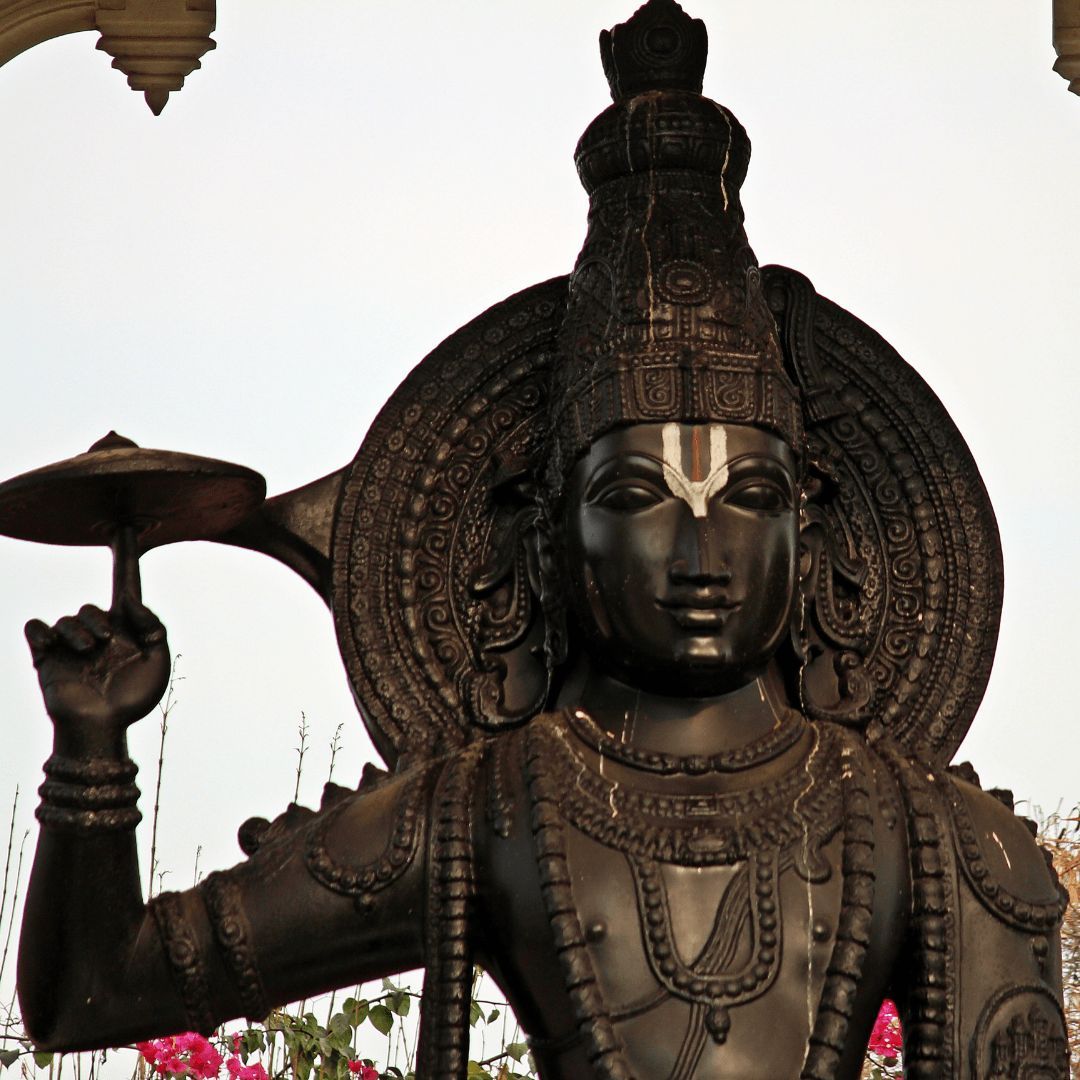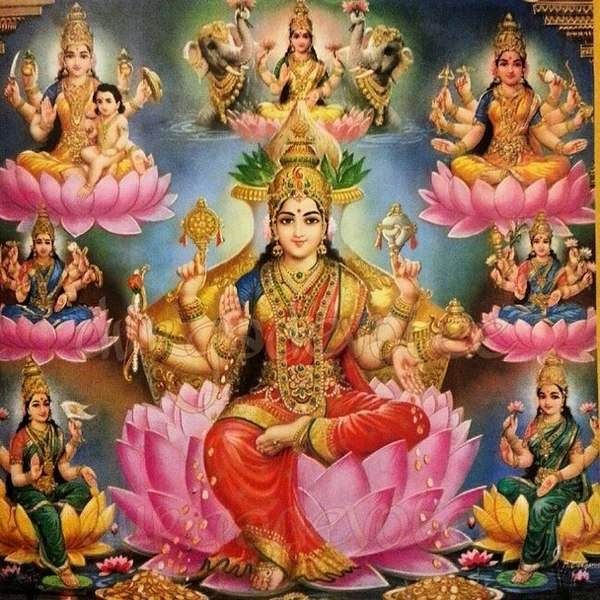Goddess Laxmi - The Divine Manifestation of Abundance, Fortune, and Shakti
Mar 28, 2025
Most people treat Laxmi, the Hindu goddess of wealth and prosperity, like a good luck charm, light a candle, say a prayer, hope for a payout. That’s not how she works.
Laxmi is structure & order. She’s the part of you that knows how to manage what you’ve asked for. She doesn’t just bring abundance, she stays where abundance is respected.
Laxmi shows up when your money has a purpose, your energy has direction, and your body has capacity. She’s present in the way you keep your space, the way you make decisions, the way you hold your boundaries, especially around time, energy, and sex.
She aligns with dharma, right action, not wishful thinking. You don’t manifest Laxmi. You become someone she lands with.She aligns with dharma, right action, not wishful thinking. You don’t manifest Laxmi. You become someone she lands with.
This article breaks down how to work with her practically. Not through rituals alone, but by embodying the habits, decisions, and sexual clarity that make space for her to stay.
Origins and Mythological Significance of Hindu Goddess Lakshmi
Lakshmi’s Birth - The Churning of the Ocean (Samudra Manthana)
Lakshmi’s birth wasn’t simple, and it wasn’t easy. According to the Vishnu Purana and Skanda Purana, she didn’t arrive easily, effortlessly, or quietly. She emerged from intensity, during the Samudra Manthana, the churning of the cosmic Ocean of Milk.
In this ancient event, Devas (gods) and Asuras (demons) churned the ocean in search of amrita, the nectar of immortality. It was a battle of endurance, strength, and sheer determination. From this struggle, Lakshmi rose. Fully formed, radiant. Seated on a lotus, gold coins in hand, with elephants showering her with water.
The lesson here is that prosperity doesn’t arrive by waiting. It’s born through dedication, clarity, and consistent effort. Her birth is a reminder that abundance isn’t about luck, it’s about showing up for the process, even when it’s difficult, and staying committed to growth.
When she appeared, Lakshmi chose Vishnu as her consort. This wasn’t a chance, but intentional. Because wealth isn’t meant to be random. It’s meant to be protected, preserved, and aligned with purpose. Without wisdom, wealth collapses. Without protection, it fades. This is why abundance isn’t merely about receiving, but more about knowing where to place it, how to protect it, and how to use it.
Lakshmi in Hindu Epics and Scriptures
Lakshmi in the Ramayana
In Hindu tradition, Lakshmi doesn’t just exist as a goddess in the heavens. She reincarnates alongside Vishnu each time he takes human form. When Vishnu took birth as Rama, Lakshmi appeared as Sita, not to sit on a throne, but to show what divine feminine power looks like in human life.
Sita’s story isn’t built on riches or ease. She was born to embody grace under pressure, devotion without self-abandonment, and power that doesn’t need to dominate. She was exiled, abducted, forced to prove her purity, and abandoned by the very society she upheld.
But Sita didn’t beg. She didn’t collapse. She chose peace over proximity to power. That’s the essence of Lakshmi. Not chasing wealth, but standing so deeply in your value that you become the source of it.
Lakshmi, through Sita, teaches that abundance isn’t what you have, it’s what you won’t compromise to keep it. Your clarity, your worth, your boundaries? That’s the real gold. And it’s exactly what makes wealth sustainable.
Lakshmi in the Mahabharata
Lakshmi doesn’t appear directly in the Mahabharata, but her energy flows through two key women: Draupadi and Rukmini. Both are linked to Vishnu’s avatar, Krishna, Lakshmi’s divine counterpart, showing how her power moves through women who shape destiny, not just survive it.
Draupadi was humiliated in a royal court, stripped of dignity while surrounded by silence. But she didn’t stay quiet. She demanded justice. Her wealth wasn’t in jewels, it was in her courage to speak when no one else would. That’s Lakshmi showing abundance as self-respect under pressure.
Rukmini was set to marry a man she didn’t choose. Instead of obeying, she wrote to Krishna and claimed her true path. That wasn’t rebellion, it was clarity. That’s Lakshmi again showing abundance as aligned action, not compliance.
Both women prove that Lakshmi doesn’t bless passivity. She shows up in the women who act like their worth is non-negotiable.
Lakshmi in Puranas and Vedic Hymns
The Sri Suktam, an ancient 16-verse hymn from the Rig Veda, describes Shri Lakshmi as the one who sustains life. Not just with gold, but with strength, clarity, and growth that drives the glitter and gold. She nurtures courage and not just crops. Not just fortune, but the wisdom to use it appropriately and grow it exponentially.
But this abundance isn’t handed out for free. Lakshmi’s blessings land where there is integrity, discipline, and purpose. If you want her presence, you earn it through action.
The Vishnu Purana names her the Supreme Goddess but even divine energy has rules. Lakshmi’s wealth is meant to be protected, nurtured, and preserved.
Hoard it, misuse it, or chase it without purpose, and it slips away. But when used with clarity, it grows. It stays.
The Eight Forms of Lakshmi - Ashta Lakshmi

The eight forms of Shri Lakshmi, known as Ashta Lakshmi, stem from South Indian spiritual tradition and are described in sacred texts like the Lakshmi Tantra, Padma Purana, and Skanda Purana. These forms were revealed to show that abundance isn’t one-dimensional. Lakshmi doesn’t just bring financial wealth, she embodies every form of prosperity a woman needs to thrive: health, courage, fertility, knowledge, leadership, and success.
Each aspect of Lakshmi emerged to meet a specific human need. As society, family, and dharma evolved, so did the ways Lakshmi manifested. Together, these eight forms remind us that true wealth is multifaceted, and it must be built, protected, and lived through every part of your life.
1. Adi Lakshmi - The Primordial Goddess
Adi Lakshmi is where it all begins. She is the original, eternal form of Lakshmi, the energy that sustains the universe and life itself. Adi Laxmi reminds that prosperity isn’t random and doesn’t start with what you earn. It starts with what you preserve, your faith, your purpose, and your connection to what truly matters.
2. Dhana Lakshmi - The Goddess of Wealth
Dhana Lakshmi is the energy most people think of when they picture abundance. She governs material wealth like gold, financial prosperity, and worldly success. But her energy isn’t about accumulation. It’s about knowing how to hold wealth, how to use it with intention, and how to let it grow through smart, conscious choices.
Her energy rewards clarity and discipline. Just as wealth that isn’t protected disappears, wealth that isn’t shared stagnates. Dhana Lakshmi is about wealth that’s nurtured, multiplied, and used to uplift, not just saving or hoarding.
3. Dhanya Lakshmi - The Goddess of Food and Nourishment
Dhanya Lakshmi represents the abundance that nourishes life, through the food that sustains life, the harvests that feed communities, and the fertility that keeps cycles in motion. But nourishment isn’t passive and her energy goes deeper than crops, into feeding the mind with clarity, relationships with care, and soul with purpose.
She is about what you cultivate daily, your health, your habits, and your capacity to nourish what matters. She asks: What are you feeding, and is it helping you thrive?
4. Gaja Lakshmi - The Elephant Lakshmi, Symbol of Royalty
Gaja Lakshmi is all about dignity, authority, and ultimate power. Often depicted with two elephants showering her with water, she represents abundance that’s rooted in strength and stability.
She gives the strength to stand tall, command respect, and lead with integrity. This is the wealth of leadership. The abundance that comes from standing tall in your integrity, knowing your worth, and leading with purpose.
She asks: Are you leading your life with clarity, and are you grounded in the power that cannot be shaken?
5. Santana Lakshmi - The Goddess of Progeny
Santana Lakshmi blesses families with fertility, healthy children, and strong lineages. But her energy isn’t limited to biological creation. It’s about what you birth into the world, ideas, projects, relationships, and legacies.
This form of Laxmi teaches that abundance isn’t just family, but beyond it. It’s more about creating something that lasts and something that outlives you. Businesses, ideas, movements, all come under this form of Lakshmi.
She asks: What are you nurturing that will shape the future? What are you creating in this world that will outlast you and will stand as your legacy?
6. Veera Lakshmi - The Goddess of Courage and Strength
Veera Lakshmi is the embodiment of bravery. She grants strength in battles, both literal and personal, by showing up in the moments when standing up feels impossible. The energy of Veera Lakshmi is the wealth of resilience, the refusal to back down when it matters most.
She asks: What are you willing to fight for? What are you protecting, even when it’s uncomfortable or difficult? Her presence is felt when you hold your ground, defend your values, and rise after every fall.
7. Vidya Lakshmi - The Goddess of Knowledge and Learning
Abundance without wisdom collapses. Vidya Lakshmi governs wisdom, the kind that turns experience into clarity and clarity into action. She governs knowledge, education, and the clarity that turns information into power.
Vidya Lakshmi reminds us that real wealth is knowledge that transforms action. Her presence isn’t about collecting information or knowing facts. It’s about knowing what matters and acting on it like knowing when to speak, when to listen, when to change, and the humility to keep learning.
She asks: Are you learning in a way that transforms your life, or are you just accumulating knowledge without purpose?
8. Vijaya Lakshmi - The Goddess of Victory
Vijaya Lakshmi is the force behind success, fame, and achievement. She is the energy that carries you across the finish line, not the kind that happens by accident. Her energy is about persistence, the small, daily wins that lead to lasting triumph.
Her blessings come to those who refuse to quit. To those who understand that success is earned in small, daily battles long before the final win. Not the easy path, but the one with a destination worth walking.
She asks: What are you willing to work for, sacrifice for, and stay committed to until you reach victory?
Lakshmi’s Association with Lord Vishnu and Dharma

Lakshmi doesn’t align with chaos. She aligns with structure, purpose, and follow-through. That’s why she’s inseparable from Vishnu, the preserver. In Hindu mythology, after she rose from the churning of the Ocean of Milk, a moment of intense pressure and upheaval, she chose Vishnu because he protects what matters.
The real message here is that abundance needs protection. Wealth without intention gets wasted. Energy without direction gets drained. Success without structure collapses. Vishnu represents that structure. He preserves. He stabilizes. And Lakshmi flows where preservation is possible.
This is true in business, relationships, sex, and self-worth. If you want more, more money, more freedom, more growth, you need to know how to protect it. That means boundaries, systems, discipline, & purpose. Lakshmi doesn’t bless hustle with no container. She blesses what’s sustainable.
So ask yourself:
- Are you holding your wealth, or leaking it?
- Are you building with clarity, or chasing chaos?
- Are you moving with dharma, or just reacting?
Lakshmi in Tantra - The Goddess as Kundalini Shakti

Lakshmi as the Supreme Shakti
Laxmi is Shakti in Tantra, the force that moves through all creation. Without her, nothing grows, nothing transforms, and nothing flows. She is the energy that stirs universes, births worlds, and breaks illusions. And Lakshmi is that energy in its most abundant, nourishing, and transformative form.
And nowhere is this more potent than through Kundalini Shakti, the primal coiled energy at the base of the spine, lying dormant, waiting to rise.
This is power in its rawest form. When Kundalini rises, it activates abundance in every realm, physical, emotional, and spiritual.
And that’s how Lakshmi moves through the chakras, unlocking energy, dissolving stagnation, and clearing the blocks that keep abundance stuck.
What happens when you call her into the chakras:
- In the root, she awakens stability and the foundation for material abundance.
- In the sacral, she ignites creativity and passion, the power to birth new ideas and paths.
- In the solar plexus, she empowers confidence and the courage to claim abundance.
- In the heart, she opens pathways to deeper connections and emotional richness
- In the throat, she clears the voice, empowering truth and clarity.
- In the third eye, she sharpens vision, helping to see beyond illusion.
- In the crown, she unlocks unity, the understanding that true wealth is oneness with divine flow.
Tantric Lakshmi Worship
You don’t ask Lakshmi for blessings or wait for abundance or luck to arrive.
You align with her energy, you activate it, channel it, and create space for it to move. In Tantra, worship is about embodied practice, activating Shakti and inviting her to move through every part of you.
It begins with mantra. The vibration of sound that breaks through resistance and invites her presence. The mantra "Om Shreem Maha Lakshmiyei Namaha" is an activation. Each syllable carries power, stirring the dormant energy and calling Lakshmi’s presence into the body, mind, and soul.
But mantra alone isn’t enough. Lakshmi’s energy is drawn to intention and clarity. That’s where yantra meditation comes in, meditating on sacred geometric patterns that act as portals for her energy. The Sri Yantra, with its interlocking triangles, mirrors the dance between Shakti and Shiva, between energy and consciousness, motion and stillness.
Through visualization, her energy is brought into focus and you see her radiance, her lotus, her shower of coins, not just as symbols, but as energy moving within.
And then, there are offerings, not as a transactions, but as an act of surrender and alignment. Lotus flowers, representing purity and divine beauty, are offered to Lakshmi to acknowledge that true abundance rises from the mud, born from struggle, shaped by clarity, and opened in devotion.
Worship and Rituals - Honoring Goddess Lakshmi

Lakshmi Puja During Diwali - The Five-Day Festival of Light
Diwali isn’t just about lighting lamps and hoping for blessings. It’s a five-day reset, rooted in action, intention, and alignment. The third night, Lakshmi Puja, is when the Goddess of Wealth is invited into homes. But she doesn’t arrive just because you lit a diya. She arrives because you created space for her. Internally and externally.
In the Ramayana, Diwali marks the return of Lord Rama, an incarnation of Vishnu, after defeating Ravana, the demon king who represents ego, greed, and chaos. It wasn’t just a battle, it was a clearing, of confusion, of disorder, of everything that blocks dharma (right action). Only after this victory did Lakshmi’s presence return in full force. Because Lakshmi follows clarity. She follows dharma. She doesn’t walk into mess.
In modern terms, think of Diwali as a reminder: if you want to call in more, money, peace, growth—you have to clear what’s been blocking it. Clutter. Doubt. Distraction. Drama. Lakshmi doesn’t respond to wishful thinking. She responds to evidence that you’re ready to hold what you’re asking for.
Here’s how to work with her practically during Diwali:
- Light your lamps as a statement: I’ve cleared the noise. I’ve made space. I’m ready to hold more. Say it out loud: I choose clarity over chaos. I choose to lead myself.
- Place gold coins or lotus flowers on your altar - To represent the value you now know how to protect. What you honor, you keep.
- Chant the Shri Suktham - a 16-verse hymn to get Lakshmi to show up & align yourself with her. Each verse reinforces that wealth should nourish, protect, and sustain, not inflate
Iconography and Symbolism of Goddess Lakshmi

The Lotus Flower - The Bridge Between Material & Spiritual Wealth
The lotus is Lakshmi’s foundation. She stands on it, holds it, and rises with it. And it holds a truth about abundance most people miss.
The lotus grows from mud, dark, dense, and resistant. Yet it emerges spotless. It doesn't reject the mud, it uses it. The struggle becomes strength. The resistance becomes fuel. Lakshmi’s connection to the lotus is a reminder that growth is forged in difficulty, and wealth is earned through resilience.
The lotus also teaches balance. It’s rooted, but it doesn’t drown. It rises but doesn’t forget where it came from. That’s the balance Lakshmi asks for. Build wealth, succeed, and grow, but stay anchored. Let success be rooted in discipline, not ego. In clarity, not chaos.
Abundance isn’t just about the rise. It’s about what keeps you steady when everything else pulls you down.
Two Elephants - Symbols of Sovereignty and Divine Blessings
Elephants surround Lakshmi, showering her with water. Not as servants, but as symbols of earned power and blessings that flow towards clarity and strength.
Elephants represent strength that doesn’t need to be loud. Power that doesn’t need to dominate. They move with certainty, taking up space without apology, without rushing, without fear. That’s sovereignty. The kind of power that Lakshmi honors.
Their showering water isn’t casual. It’s a mark of recognition that acknowledges stability, discipline, and integrity. Because blessings fall where they are deserved, where discipline has laid the groundwork and strength has held steady.
Lakshmi’s message here is simple, power must be held with clarity. It must be earned through action and protected with discipline. Not taken or forced but earned. Elephants are also significant in Jain temples, where they symbolize strength and stability, reflecting the cultural interplay between Jainism and broader Indian religious practices.
Gold Coins Flowing from Her Hands
The coins pouring from Lakshmi’s hands speak of flow, but not without conditions. Wealth is meant to move, but it can only move when it’s held with responsibility.
Abundance isn’t static. It’s a cycle. Hoard it, and it stagnates. Waste it, and it disappears. But guide it with purpose, and it multiplies. Lakshmi’s coins remind you that wealth is as much about protection as it is about release.
It’s not about how much you have. It’s about how well you manage what moves through your hands.
Do you protect it wisely? Do you let it grow, or do you let it slip away?
Lakshmi’s coins ask these questions. Because abundance doesn’t stay where it’s feared or hoarded. It stays where it’s trusted, nurtured, and shared with purpose.
When you look closely, these symbols are standards and each one asks:
- Are you steady through struggle, like the lotus?
- Are you holding power with discipline, like the elephant?
- Are you guiding wealth with clarity, like the flowing coins?
Embracing Lakshmi’s Teachings in Modern Life
When you read ‘Laxmi is the Goddess of Wealth,’ try to reframe it this way: she’s the goddess and the force of how you hold, protect, and grow wealth.
Not just in gold or status, but in health, wisdom, happiness, and dharma. Because real prosperity comes from what you cultivate. And what you choose to protect when it’s hardest to hold.
So, how do you invite her blessings in a world where chaos feels constant and clarity feels fleeting?
- Wealth with purpose: Lakshmi teaches that wealth must be rooted in intention. Not gained for the sake of having, but directed towards growth, stability, and upliftment. This is more about creating value than financial gains by protecting your home, nurturing relationships, contributing to your community, and ensuring that abundance supports life, not just lifestyle. It serves not just the present but the future, an act of preservation.
- Generosity that expands: Wealth isn’t meant to stagnate. It’s meant to flow, grow, and serve. Lakshmi’s energy moves where generosity opens the door. But generosity isn’t about empty giving. It’s about intention. It’s about recognizing where wealth can plant seeds that grow into stability, strength, and opportunity. The more wealth is trusted to move, the more it grows.
- Living the Feminine Energy of Growth: Lakshmi embodies divine feminine energy, a force that nurtures, protects, and births abundance into form. Honoring her is about embodying that energy daily. It’s about choosing clarity when confusion is easier. Choosing patience when greed is louder. Choosing discipline when chaos calls. Feminine energy is active as it creates, shapes, and holds. It doesn’t shrink from challenge but roots deeper, ensuring that what is born isn’t just present but strong, staying present through the slow, patient work of creation.
- Living in Alignment with Dharma: This is about living with purpose and integrity, not perfection. It’s the invisible thread that connects every action to its higher purpose. Lakshmi’s energy flows where life is lived with intention, where decisions are shaped by what strengthens, not weakens, growth. Living in dharma means asking if your actions create lasting strength or stability, protect growth from neglect, and prioritize alignment over instant gains.
Conclusion
Lakshmi is is the embodiment of abundance in every form, money, vitality, wisdom, love, confidence, purpose. And she shows up when you do. When your life is aligned with clarity. When your habits protect what matters. When your decisions are rooted in intention, not just impulse.
Lakshmi stays where there’s room for her to grow. Where wealth is honored, not hoarded. Where energy is used wisely, not scattered. Where you choose to lead yourself with focus, devotion, and grace.
You don’t have to be perfect to receive her blessings. But you do have to be present. You have to show up for what you say you want, and live like you can hold it.
So ask yourself,
Am I creating the kind of life abundance can stay in?
Am I choosing clarity, purpose, and trust, daily?














